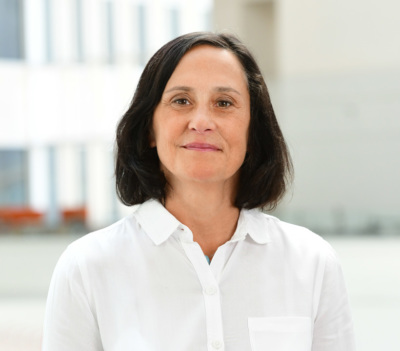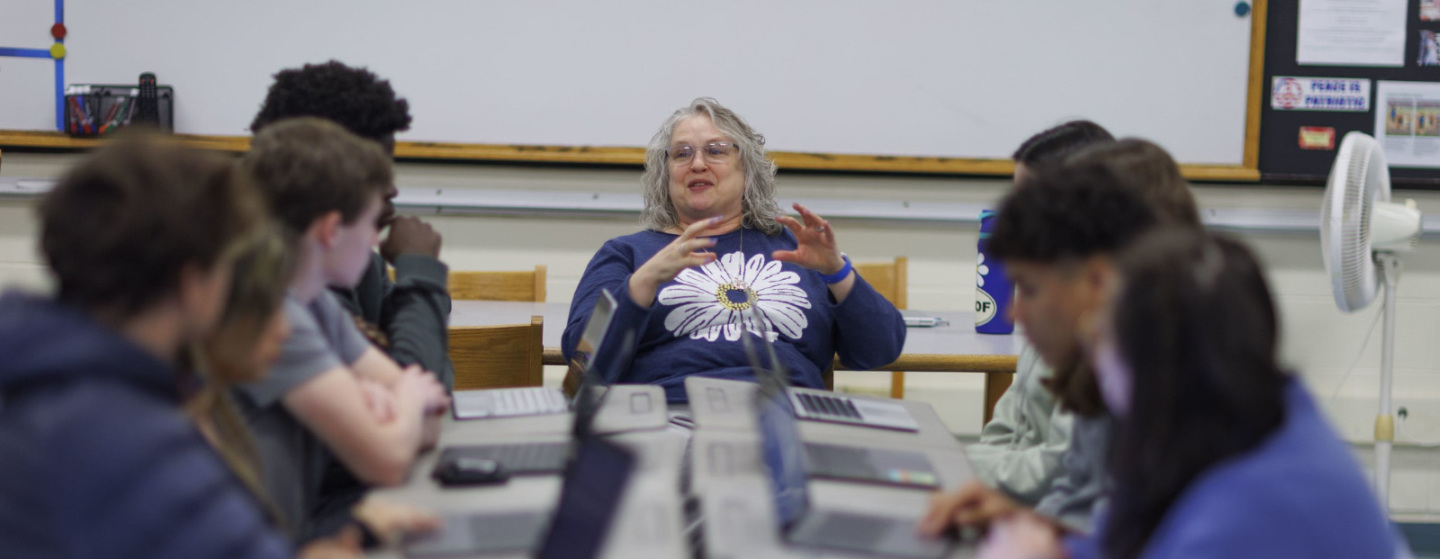
More Info
Using examples from The Sift, social studies teacher Mary Robb and her students discuss news coverage by media from the political Right, Left and center at Andover High School.
Photographer: CJ Gunther
Making the connection between media literacy and democracy
From the perspective of 2022, Mary Robb and her colleagues look like fortune tellers. Back in 2001 — before 9/11 conspiracy theories, viral memes and QAnon — the educators created a Democracy and Media Literacy course.
“We were teaching civics and figured it made no sense to teach students how to be citizens without teaching them how to navigate the media,” recalled Robb, who teaches social studies at Andover High School in Andover, Massachusetts.
She and her fellow teachers began by giving students a strategy for evaluating the credibility of news and other content borrowed from another colleague, Kathryn Reusch. It’s called WAIL:
- W: for the most powerful words use in an article.
- A: for adjectives and adverbs and what they might indicate about bias.
- I: for the information included.
- L : for the information left out.
“We want to help students become active rather than passive news consumers. What they learn in our class they use every single day,” Robb said.
Senior Nicholas Leonard, who took the class last spring, said learning to analyze news articles has helped him think more critically. “We’d take a story and break it down— right wing, left wing and centrist sources — and then piece the story together to get to the facts. We stripped away the bias.”
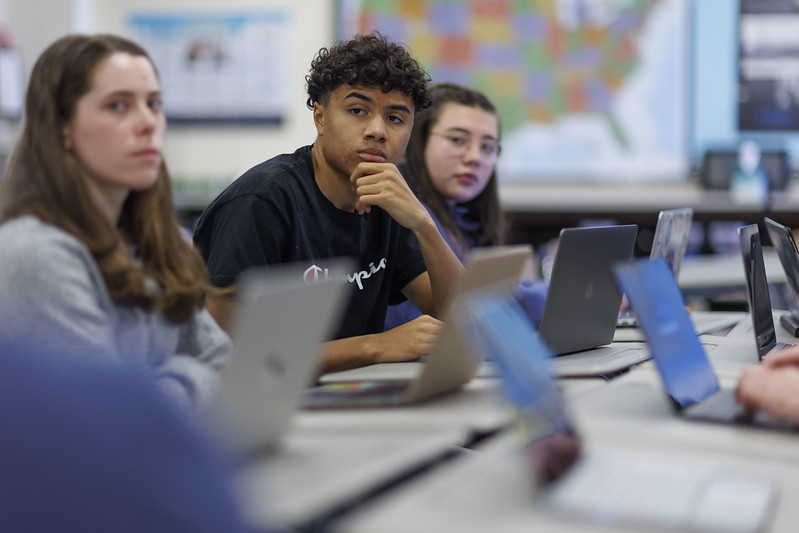

The students go through The Sift item by item, pausing after each one to write down their thoughts. “Now it is second nature. They are much more mindful news consumers,” she said.
Meaningful conversations
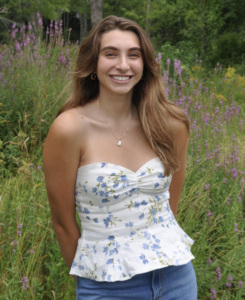

Senior Siham Berty took Mary Robb’s Democracy and Media Literacy course last year and said, “she made sure we had access to a wide range of sources, so we always felt like were getting the truth. And we felt like we could voice our opinions.”
Senior Siham Berty took Robb’s class last fall and said she now looks at information differently. “If you asked me a year or two ago, I was 10 times more likely to believe what I saw on social media. Now I take it with pinch of salt. I don’t look at the first thing Google gives me. I go through other news sources.”
One of Berty’s favorite elements of the course was the meaningful interaction with other students. “Her (Robb’s) class really focuses on group discussion. She made sure we had access to a wide range of sources, so we always felt like were getting the truth. And we felt like we could voice our opinions.”
Leonard said that interaction was useful in other ways as well. “I think it really helped in finding common ground. We’d research a story, then break off into groups and come together and talk about it. I think that really helped in promoting compromise and understanding.”
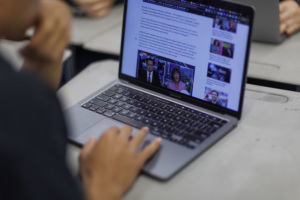

She asked students how they heard about the riots and reacted to the news. Then she had students apply the WAIL process to the information they consumed. They realized how different the facts about the event could be, based on the accounts they read. They also broke into groups where students of all political stripes felt comfortable and empowered to speak, Robb said.
To help students understand the impact of social media on their lives, they are asked to take a break from all platforms for one school week. They keep track of what it’s like to be offline each day. Not surprisingly, some feel like they are missing out on what other kids are talking about. But others notice differences in themselves. One student told Robb, “I feel much more calm.” Another said, “I feel more in charge of my thoughts.”
Media literacy and civic engagement
Leonard, who also works as a videographer for the town of Andover recording public meetings and events, considers himself civically engaged. But he said the class strengthened his desire to become even more involved. “I think it made me want to be more engaged. It’s made me aware of people who didn’t have a voice. I want to be politically active and make a difference.”
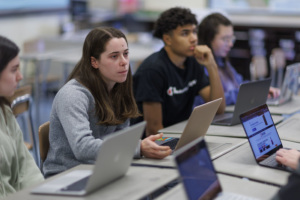

And the learning doesn’t stop at the classroom door. Students get extra credit when they do community service, attend a municipal meeting or volunteer at the polls on Election Day. One year, 30 of Robb’s students volunteered in some form. “They were so passionate,” she said.
That passion for civic responsibility endures. “I’ve gone to vote and seen students I had five or six years earlier. They say, ‘Of course, I vote.’ That is so encouraging,” she said.
